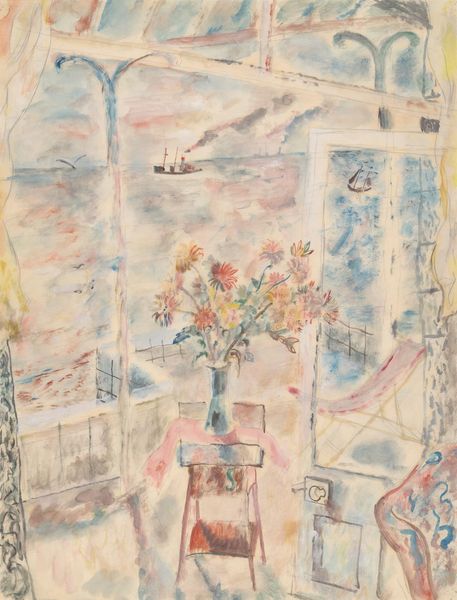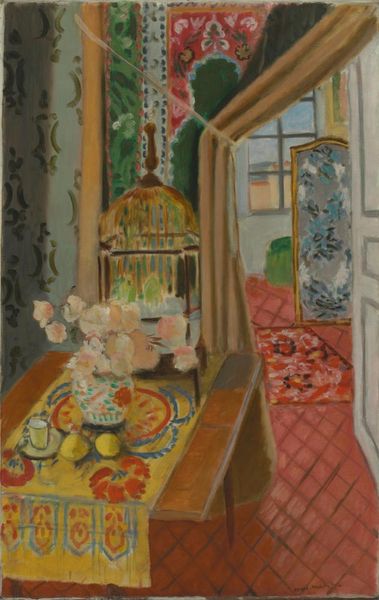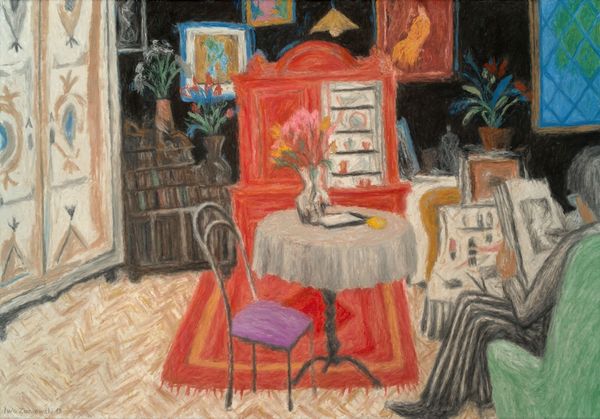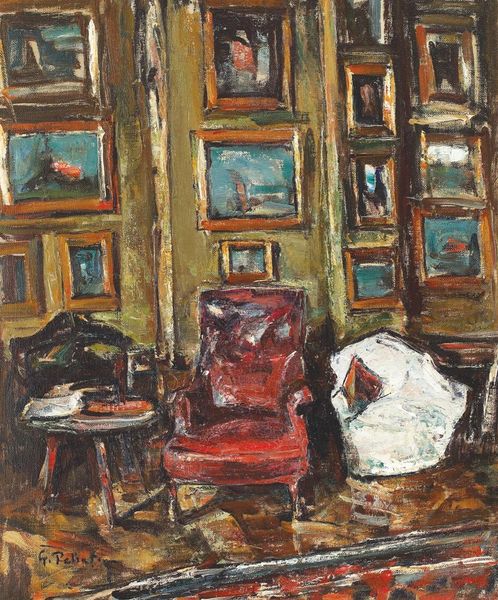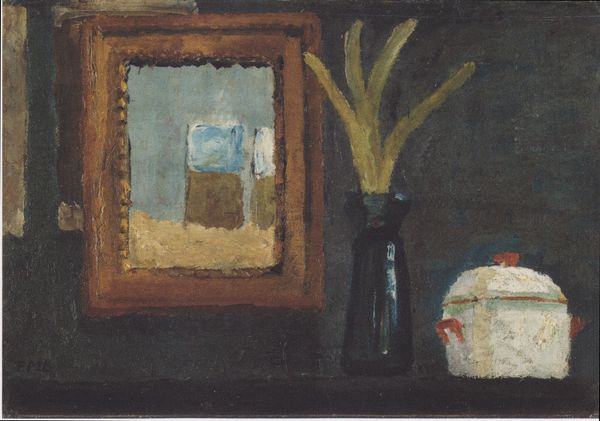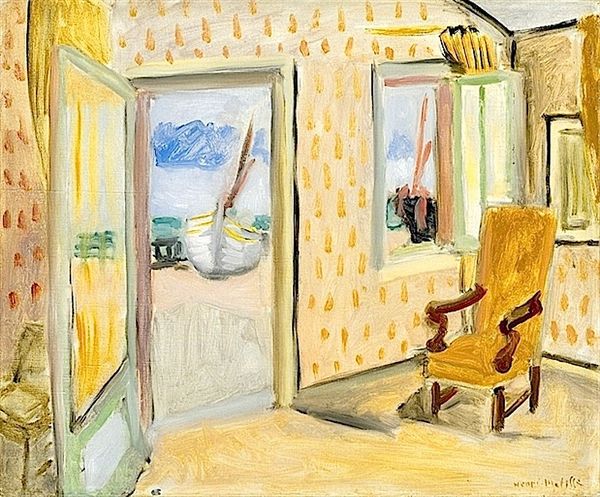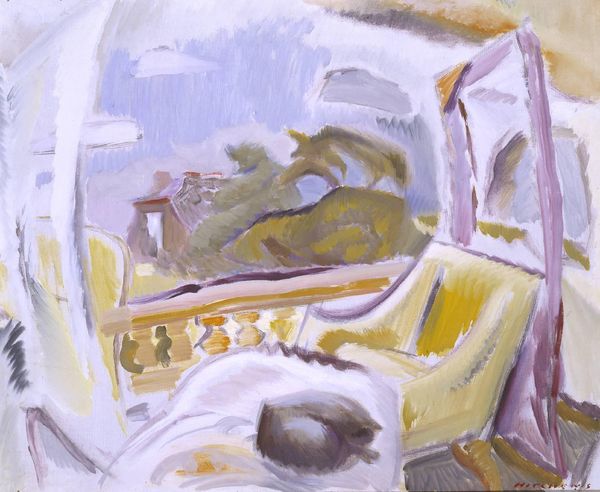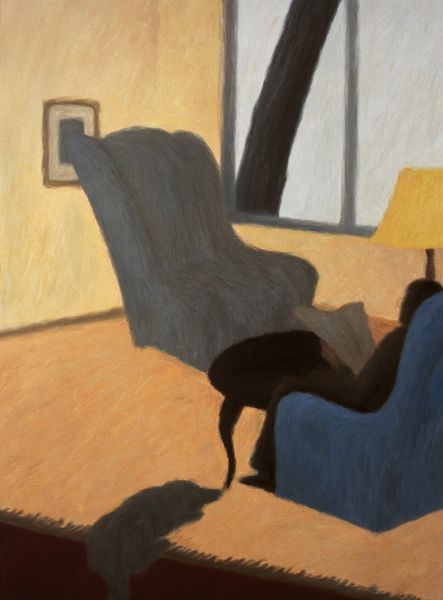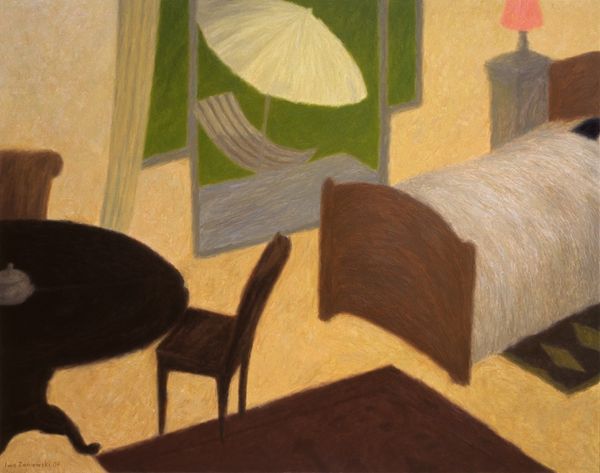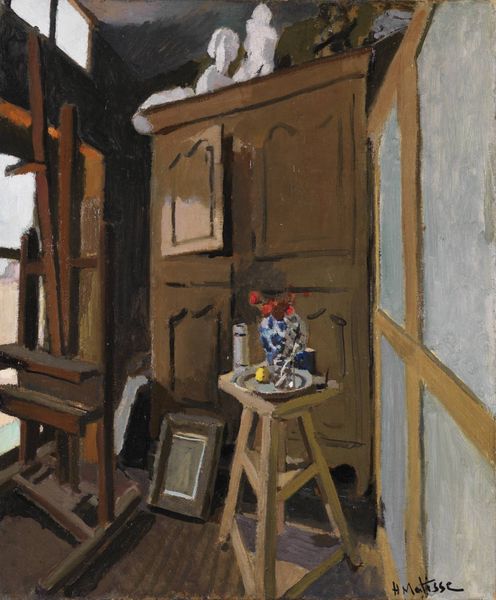
Dimensions: 72.5 x 60 cm
Copyright: Public domain US
Editor: Here we have Henri Matisse's "Open Window, Etretat" from 1920, rendered in oil paint. It strikes me as such a domestic scene, yet the window frames a very public, social space of a beach. How do you interpret this kind of visual tension? Curator: It's a fantastic question. Consider that during the early 20th century, as urban life rapidly changed, artists like Matisse were increasingly drawn to representing both the intimacy of domestic interiors and the allure of public spaces. Windows, especially in Impressionist and Fauvist paintings, often served as liminal spaces - a border between the private and public spheres. Do you think this painting expresses an unease, or maybe even an optimism, about the relationship between these spaces? Editor: I think both. The bright colors and visible brushstrokes express excitement but there's also something isolating about being inside, looking out. What do you think the inclusion of the social activity on the beach contributes to its understanding? Curator: The beach becomes a stage, doesn't it? Note how Matisse frames it, almost theatrical. The painting implies a power dynamic: the viewer within the private sphere observes and perhaps even subtly controls their perception of the world beyond. The politics of seeing and being seen becomes central here. Is Matisse perhaps asking us to consider how we ourselves perform in these spaces – the public and the private? Editor: That’s such a useful insight, thinking about the ‘performance’ of public and private selves! It makes me consider the choices we make about how we present ourselves to the world, and how artists have captured this dilemma over time. Curator: Exactly. Thinking about how public and private image-making reflect societal trends offers such an enriched lens for analysis. This interplay will change the way I see art in the future.
Comments
No comments
Be the first to comment and join the conversation on the ultimate creative platform.
